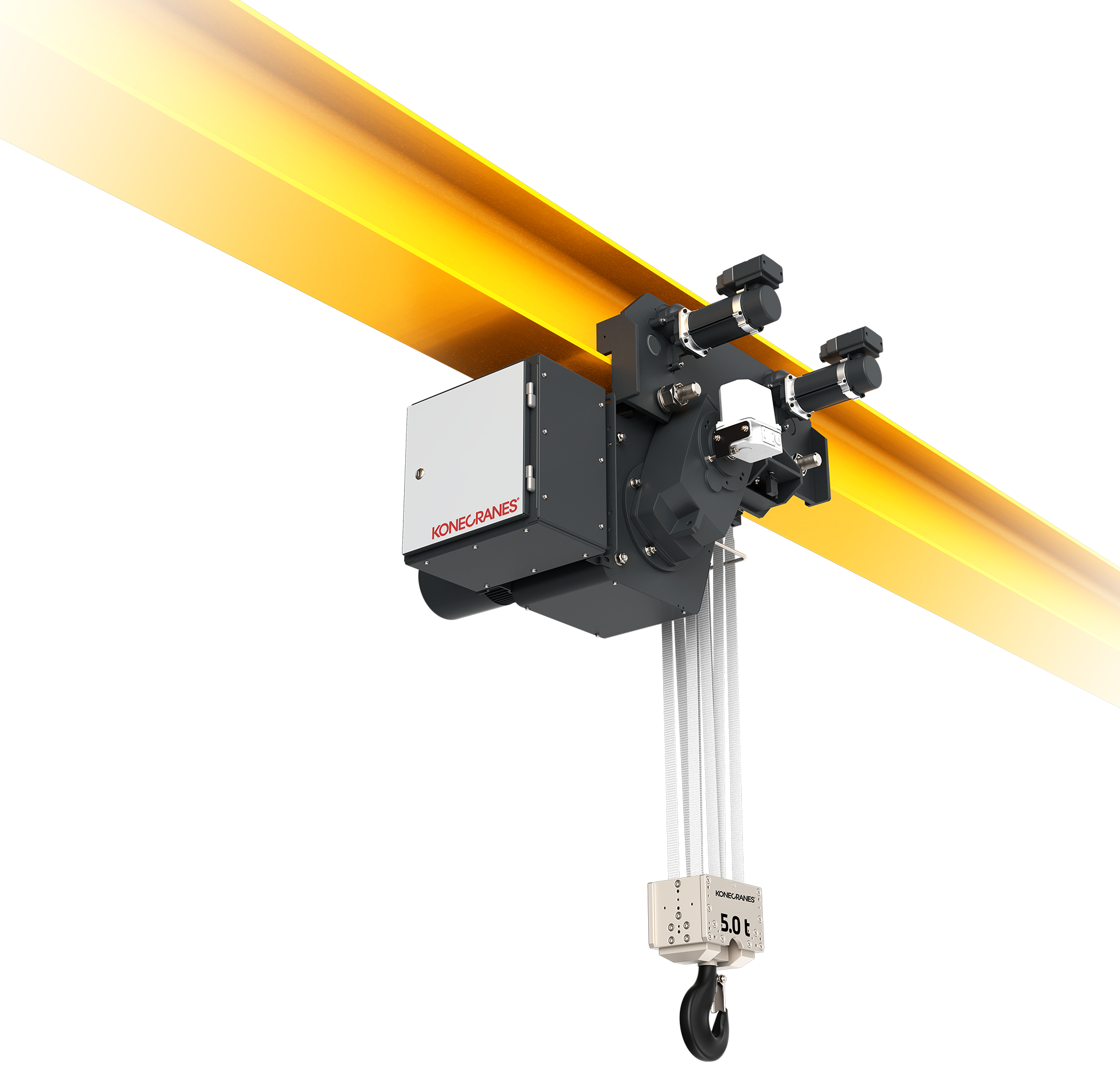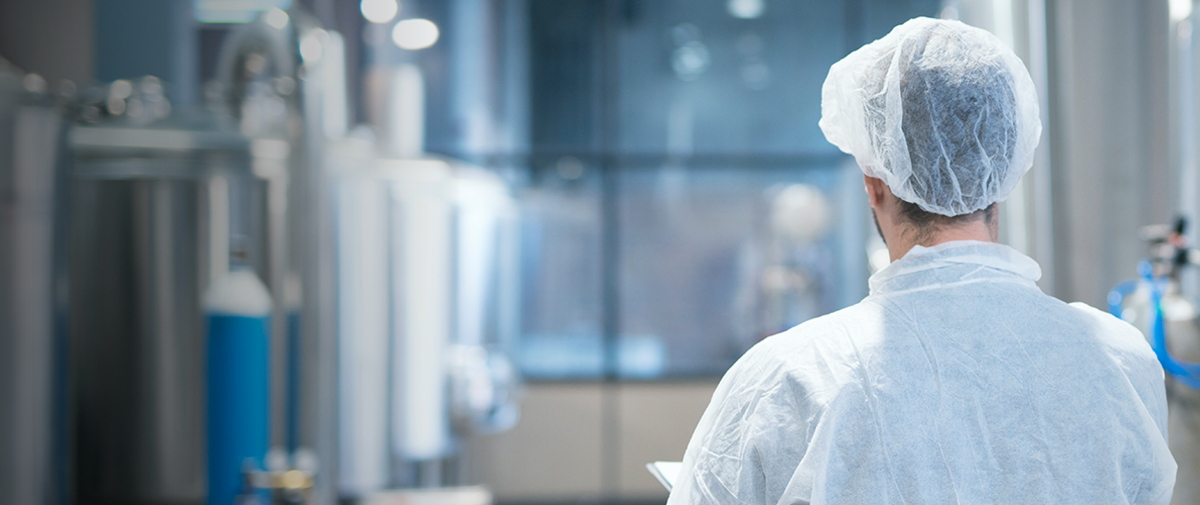As products and processes become more technically demanding, the need for clean lifting specifically engineered to prevent contamination is becoming more important. Konecranes recently unveiled a secret weapon in this fight: a niche-market hoist originally developed for the food industry that is now gaining wide acceptance in areas where technical cleanliness is paramount and the need for hoist lubrication is a potential problem.
Created for French cheese manufacturers who needed a robust and clean lifting system where the hook could submerge in light lye and withstand steam from boiling water, Konecranes belt hoist replaces the usual chain or Created for French cheese manufacturers who needed a robust and clean lifting system where the hook could submerge in light lye and withstand steam from boiling water, Konecranes belt hoist replaces the usual chain or rope assembly with a synthetic fiber belt that never needs lubrication. This innovation eliminates the possibility of contamination from metal pieces or lubrication falling on the products.
Upgraded to meet customers' unique needs
Now available in capacities up to 5 tons, the Konecranes belt hoist has an optional stainless steel housing that is easy to clean with a pressure washer. Inside, high-strength polyamide pulleys with completely sealed bearings support the belt, which is resistant to acids, bases, mineral salts, solvents and oil. With IP55 shielding, an electrically isolated hook block and sealed bearings, this versatile hoist maximizes safety wherever it is used. It is easy to install on a wide variety of lifting systems such as jib cranes, Konecranes KBK workstation lifting systems, monorails and stationery applications.
Today’s belt hoist has been upgraded to include the bells and whistles customers expect from a Konecranes product, as well as the legendary reliability and stellar product support customers expect from the world’s largest manufacturer of lifting equipment.
So, who needs this hoist?
The belt hoist is perfect for applications that require “technical cleanliness”, according to ISO 16232 (VDA 19), which measures particle values at surfaces. It is also being used for some clean room applications, for example semiconductor production, but is not yet certified. Industries with processes that can benefit substantially from its design include:
• Automotive industry and electric vehicles
• Medical / Pharmaceutical industry
• Mechanical manufacturing
• Additive manufacturing (3D printing)
• Electrical manufacturing and battery production
• Optical industry
• Oil analysis and hydraulics
Why is it better?
The standard of “technical cleanliness” was fundamentally invented by the automotive industry, which is a major market for Konecranes belt hoist. Both electric vehicles and traditional cars are experiencing an escalating need for cleanliness in production. Manufacturing processes even for a standard car with a combustion engine are becoming more complex as computers proliferate. Dirt and dust particles distributed by chain and wire rope hoists that require lubricating oil can be a big problem in modern automotive manufacturing. So, just as it would be in the food industry, the first problem that the belt hoist can solve is product contamination during manufacturing.
But that’s not all. The life span of a traditional hoist relying on a chain or wire rope for lifting is another issue. Any process that involves abrasive dust or powder is a problem for hoists with traditional chain or rope lubrication because the lubricant allows dust to stick to the chain or rope, which then wears out very quickly. The polyester or Dyneema belt powering Konecranes belt hoist has no problem with this kind of dust, which means that in addition to promoting a cleaner process, the hoist also lasts much longer with less maintenance. So big-bag handling involving abrasive materials like stone, sand, cement, plaster and so on, can operate more effectively with less disruption from hoist maintenance. Similarly, foundries, grinding shops creating metal dust and mining applications benefit as well.
Another advantage offered by the belt hoist is elimination of the polygon effect, attributed to chain links that create swinging, which can interfere with the resonant frequency of steel structures. The polygon effect can cause uncontrolled swinging, especially on jib and light lifting cranes with large spans. Belt hoists do not experience this; the smooth lifting action making them the best choice for light lifting cranes.
In addition to not needing lubrication, the belt has a high resistance to chemicals. Paired with extended protection delivered by the optional stainless steel equipment, pulleys made from polyamide and completely sealed bearings, the belt hoist is easily cleaned with a pressure washer, maintaining a clean working environment for many types of products.
Getting back to that “cleanroom” idea . . .
While Konecranes has not pursued belt hoist certification for cleanroom use (Cleanroom ISO14644-1 and -14), it’s worth delving a bit deeper to explain why. Certification applications are highly specialized, and standards for each of the nine classes which specify the particle size and frequency allowed must be sought individually, making it time consuming and costly. But it’s worth noting that resellers building specialized cranes for cleanrooms requiring ISO Class -7 and above routinely purchase bulk quantities of Konecranes belt hoist, which are then incorporated into complete machines certified by the builder. So, the belt hoist once again has quietly become a manufacturer’s secret weapon - even in cleanrooms!
If you’ve read this far, you are probably wondering if the Konecranes belt hoist could make a difference in your process. Let us analyze your situation and provide detailed recommendations on how it can work for you.

